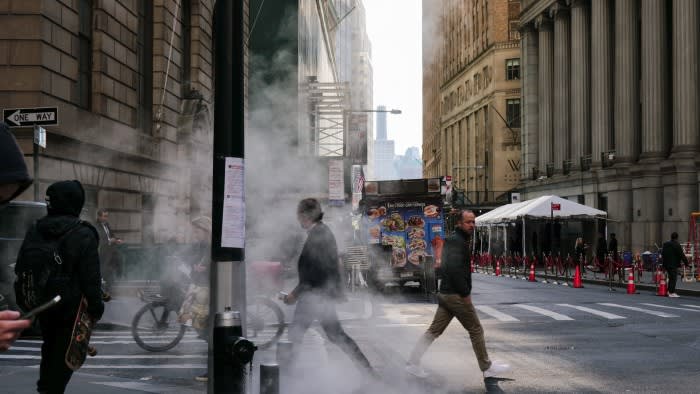Unlock the Editor’s Digest for free
Roula Khalaf, Editor of the FT, selects her favourite stories in this weekly newsletter.
Emerging market investors can finally see light at the end of the tunnel. But they are checking carefully to make sure it is not a train coming towards them.
The asset class is having something of a moment as the macroeconomic environment turns hugely in its favour. Interest rates in the US are finally falling. At least in theory, this should pull down US government bond yields and bolster the allure of debt offering higher interest rates from outside the usual rich-country club.
Crucially, this long-awaited decline in US rates has kicked off even while the American economy itself remains in decent shape — a good combination for the animal spirits that tend to support riskier asset classes like emerging-market debt and stocks.
Last but not least, Beijing has unleashed a wide-ranging set of stimulus measures, sending previously deeply unloved Chinese stocks soaring and potentially helping to support the nation’s demand for the resources that lots of emerging-market countries can supply.
Each element of these forces has at least one huge “but” attached to it. Nonetheless, emerging markets are back on the menu for a lot of investors who have ignored the asset class for years.
The decline in US interest rates will “set emerging market debt free”, said M&G Investments in a recent blog post. Particularly since the outbreak of the Covid pandemic, investment flows into emerging markets have been “terrible”, said Charles de Quinsonas, a fund manager at M&G Investments in London at a recent event. “It has not been a good time to be an EM manager.”
For many investors, the asset class has just not been worth the faff. Simply tracking the S&P 500 index of US stocks over the past five years — hardly rocket science and very cheap to execute — has doubled your money. Over the same period, the MSCI emerging markets index has left you up by about 10 per cent. US exceptionalism has sucked in funds from all over the world — in bonds and stocks — and left emerging markets out in the dark.
This now played in their favour, said de Quinsonas at M&G. “It would take just small flows to support the asset class,” he said. “It’s not a crowded asset class at all.”
Funds tracker EPFR said nearly $40bn flowed in to China equity funds in the first week of October. “That influx of fresh money, which more than doubled the previous weekly record, also lifted the headline number for all EPFR-tracked emerging markets equity funds to a new record high,” it said, adding that emerging-market debt funds were extending their longest streak of inflows in more than a year.
This sugar rush will not be enough to foster long-term interest in emerging markets on its own. The jury is very much out on whether all the stimulus announced this month makes China investable. On the plus side it is a statement of intent, but the property sector remains a festering sore.
That is not the only source of caution. Benjamin Melman, chief investment officer at Edmond de Rothschild Asset Management, told me this week he had been overweight emerging markets — a higher allocation than benchmarks would suggest — for a little while. China’s pro-growth pivot and the US’s monetary pivot both help him out there. He was sticking to that stance, he said, but the chance that the US had cut rates too hard, too soon was bugging him. “The visibility on the Fed is less clear than it was just two weeks ago,” he said — a nod to the inflation expectations creeping back into US markets.
Swiss bank UBS said in a note this week that if the US economy did not soften, it was plausible to imagine the Fed raising interest rates back up to where it started and beyond by early 2026 — a reversal that would bring a “net negative impact to EM assets”, it rather drily observed.
Meanwhile, rating agency S&P Global this week also warned that higher debt burdens and higher borrowing costs meant that emerging market governments would “default more frequently on foreign currency debt over the next 10 years than they did in the past”.
Lastly among the main risks, anyone who tells you they have a precise understanding of what trade tariffs might land in the event that Donald Trump gets back into the White House, and what they might mean for developing countries, is fibbing. But the consensus is that this could of course sting. UBS estimated that a Republican sweep of the presidency and Congress in November would point to a 4 per cent drop in the MSCI emerging markets stocks index to the end of 2025. If tariffs ratcheted dramatically higher, the decline could be as much as 11 per cent, it said.
The key, then, is expectations management. The lower US rates environment is helpful to emerging markets, and “every little helps for an under-positioned asset class”, the Swiss bank said. Returns were likely to be “respectable”. That is a big win in comparison with the past few years. But emerging markets are unlikely to regain the sparkle they enjoyed in the zero interest rate world of the past any time soon.
katie.martin@ft.com
https://www.ft.com/content/0d9e9da8-fc79-412f-bb82-27d35b419a2d


